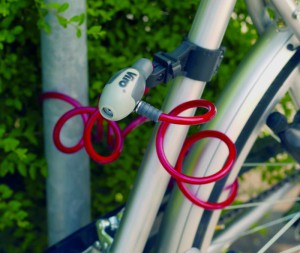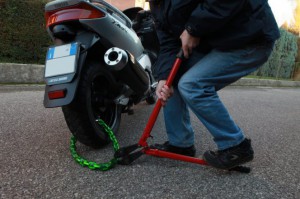The 100th Giro d’Italia takes place during this month of May and we at Viro have greeted it in real time.
Stage number 12 (Forlì – Reggio Emilia) covered a distance of 229 km, passing through Zola Predosa, near Bologna.
Knowing that there are so many cycling fans that follow us, we would like to offer some safety advice to best safeguard your bicycle on the occasion of the centennial edition of the most famous cycling race in Italy.
- The first rule is to secure your bike to a fixed point using an anti-theft device (cable, chain or U-lock).
This may seem a trivial issue, but there are times, in the absence of fixed points (such as a pole, a bicycle rack or a wall eyelet), and with little time to look for one, that one simply secures the wheel and the frame: it’s almost like switching on the electronic burglar alarm at home and then leaving the front door open. It becomes child’s play to steal the bike by lifting it and removing it by hand, and then removing the anti-theft device calmly elsewhere.
And remember to choose anchor points that truly are fixed: be aware of short poles, from which one could take off an anti-theft device secured only to the frame, and be also wary of those which do not have a concrete base, but are only inserted in the ground (for example, signposts): these can often be easily lifted up and moved.
The most practical and useful way to secure a bicycle is undoubtedly the twisted cable: it is light, economical, but above all functional, thanks to its flexibility, for anchoring various parts of the bike to a fixed point.
The flexibility of the twisted cables should be used to tie together the frame and wheels to a fixed point.
However, pay attention of the actual strength of the material to cutting. It is always best for the product to made of steel and that it has an adequate diameter (minimum 8 mm), to prevent it from being easily cut with small shears or cutters.
- The padlock must also be carefully chosen because a potential thief will not need use a shear to get round a poor quality lock, as it will be sufficient to pull the two ends of the cable forcefully or with the help of a lever to break it.
Choosing a good quality anti-theft device, even if none of them are absolute infallible, is always a good idea: it discourages thieves who are less well equipped and, if used properly, you will not have to buy any more.
Padlocks and chains, for example, are a good solution: despite being more bulky and heavy than a twisted cable, they definitely have better resistance to cutting and breaking.Remember also that, in order to obstruct thieves armed with shears or cutters, it is absolutely essential that the padlock’s cable or chain is always raised above the ground.If the cable or chain touches the ground, it is possible to rest the head and an arm of the cutters on the ground, thereby loading the entire weight and force on the other arm of the tool. This takes advantage of the leverage effect, and imparts a much higher force than could be developed by simply squeezing together the arms of the tool with both hands.
- A last tip to further increase the level of security of your bike left in the road is to use, if possible, two different systems to secure it. For example: a U-lock and a padlock with a chain, a cable and a chain, etc. The combination of multiple anti-theft devices means that the thief requires different skills and tools, and overcoming them becomes more complicated, especially for “small-time” thieves.
And what if the bicycle is parked in a garage, instead of on the street? As this is a truly effective means of protection, great attention must be paid to which types of security products are installed on the garage door … but we’ll talk about it in a future blog!

